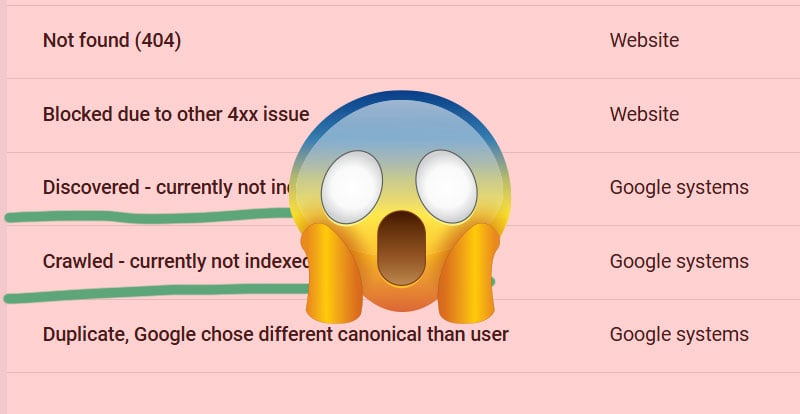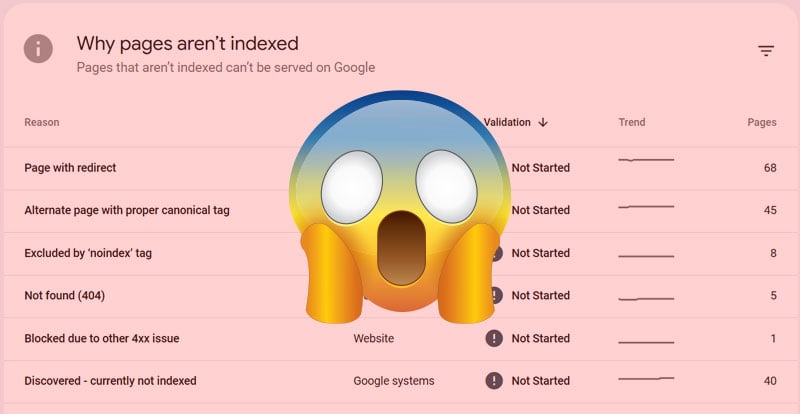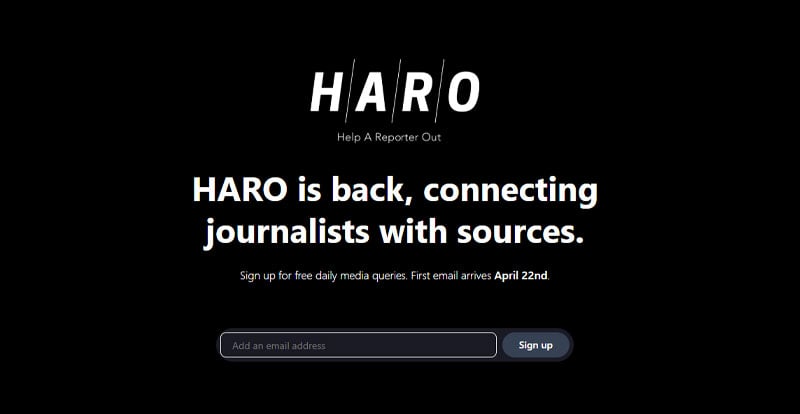You know, it's pretty wild how many folks come to me with no clue about where their websites stand in the grand SEO scheme of things. I'm talking about everything from small startups to big companies. They'll pop in, assuming they know how their site ranks for certain keywords, but more often than not, they're shooting in the dark. It's not just about not knowing their rankings; many don't even know what keywords they're actually showing up for in search results, or how to find out.
This whole "I think I know where I stand but actually, I have no idea" situation is super common. That's exactly why I decided to put together this guide. I want to show you how you can easily check your website's SEO status on your own, and here's the kicker – it's totally free. No need to shell out big bucks or get tangled in complex tools. Let's dive into how you can get the real scoop on your website's SEO, and trust me, it's easier than you think.
Let’s dive in.
The Basics of SEO Audits
SEO analysis is just as important as product or software testing. Your website isn’t just a fanpage, it’s a platform and tool you need to be constantly optimizing. SEO auditing is the process of using an evaluation tool to analyze your website. The test results will tell you exactly what you need to do to get your website to the top of the search engine results pages(SERPS). There are also quite a few tests you can use to get these results. Time-based tests, user testing, and SEO split-testing can all be used to provide distinct insight into different parts of your site - whether it be the user experience, evaluation of KPI, or group testing.
If you want to drive consistent traffic, and revenue, to your site make sure you’re consistently monitoring your SEO. With the metrics and data available to you as well as your competition, you could quickly find yourself down the rankings without regular testing.
We make some damn good websites.
Hit Us UpThe Power of Incognito Mode
When I search anything on Google, I get my Google search results, not yours. Everything from the location of my IP address to the cookies I’ve accepted, to my previous searches informs the results Google provides. That’s where Incognito mode comes in. It’s not just an easy way to keep a search from your history, you can also get a mostly unbiased search result about literally anything. It won’t hide your IP address, but it won’t track any of your data as search results are generated.
Your industry, your product, your business, even you - an Incognito search will give you an impartial result from which you can extract tons of data without ever downloading a tool.
I can't count how many times a client says they rank 1st for a keyword and it turns out they're not even on the first page because they've been doing normal Googling instead of incognito. Obviously, Google knows you own that business and is showing it first for you.
To conduct an Incognito search, simply open a Google Chrome browser and click the top three dots on the tab. From there, click “New Incognito Window” and you’re ready to go. Other browsers may call it "private" window.
To add localized SEO data and insight into your search, you can use this command:
“&near=CITY NAME”
Exploring Google Search Console
Luckily for you and me, Google offers its own tool to help you get to the top of its results. Google Search Console is a service that allows developers, designers, business owners, and more to evaluate their websites and measure traffic and performance. Don’t start emptying your wallets for this too quickly, it’s free! It might not be as robust as some expensive competitors, but you’ll get valuable data on traffic, troubleshooting, and search query results - and it comes directly from Google so you know it's going to be mostly accurate.
Pagespeed helps improve the user experience on multiple platforms. If Google doesn’t think your website is properly formatted for mobile phones or devices, your domain isn’t going to appear in those results. The Pagespeed testing feature will make sure you meet their requirements and get your business on those results pages.
To get started, simply head to Google Search Console, prove ownership of your domain, and start going through their extensive guide. They’ll walk you through the basics of your Google Search journey.
Then, you’ll get access to essential metrics that will change the way you see your website. Search query results that show your direct placement on certain searches. Impression data on how many times your link was seen on Google. CTR(click-through rate) results that demonstrate how many of those seen links are turning into clicks. Not to mention position data, which shows you your relative ranking on a given Google search.
GSC is one of the best and my most used tools for SEO analysis. It's a requirement and you can use it too, for free.
I spend most of my time in the Performance area and Search Results, which is where keywords + data are stored. This is where you can see exactly what keywords people are clicking on and what keywords you show for. You'll want to do a few things here to get some good insights:
Remove your brand name
In the "+ New" menu, choose "Query". You'll be adding a "Queries not containing" and then type in your brand name. You'll want to remove keywords that include your unique name b/c those people know of you and aren't coming to you brand new. This method doesn't work if you have a generic name.
For example, if your business name is Mike's Landscaping, you'd want to remove the word "mike". This way, you'll only get results showing how you actually rank for relevant landscaping keywords.
Choose the "Devices" tab for accurate clicks
I don't know why, but the clicks and impressions counts are more accurate in this tab than the others. You won't get the granular data but you'll get a better general sense.
Run Period-over-Period reports
In the "Date" filter option, switch over to "Compare". Choose different periods and year over year options to see how you compare to other times of the year. If we're still talking about Mike's Landscaping, you should see seasonal changes and this can help you better prepare.
Leveraging Your Business Profile for SEO Insights
Your Google Business Profile (GBP), formerly Google My Business, is almost as valuable as your website. More valuable depending on the type of business you are. If your business is local to a specific region or city, you want to be at the top of local search results. If you run an Art Gallery in Center City, your GBP needs to be at the top of the “art gallery center city” search results. When you use SEO to improve that profile, you can provide more details about your business and cultivate your image. From there, customers can more easily find you, rate and review you, and send your GBP to anyone they’re recommending it to. All you need to do to claim your page is head to this link. From there, you can create an inviting profile that will give you even more valuable data you need to be using.
Now that you have your profile, it’s time for Insights, a tool that’s going to tell you almost everything you need to know about your customers. How they found you, where they found you from, phone call data, directions, business categories, and even more search query results are just the tip of the Insights iceberg. If customers are finding you from direct instead of through discovery searches, you need to make your brand more visible. If your customers are making appointments or calling during a specific time of day, you better believe that’s when you need to be answering the phone.
Insights will tell you more about your customers than you ever imagined. Then, you can use that to create the exact GBP that customers will want to see.
Competitor Analysis Without Paid Tools
If you don’t know who your competitors are, you’re already doing it wrong. You don’t even need a free tool to find out who they are. If you expected to be at the top of a certain result and you aren’t, you just found your competitors. If you are the top result but you can see some new kids on the block trying to creep into the top spot, those are your competitors too.
And I don't mean business competitors, I mean SEO business competitors. Companies that show up on the top of Google are what I'm talking about here.
They use your keywords, they operate in your industry, and they may even be your neighbor!
By conducting a few keyword search tests, you can even identify how well their website SEO is working compared to yours. That method will help you to identify content gaps in your website, which are keyword searches your competitors appear in but you don’t. Sure, there are expensive tools you can pay for to get competitor analysis, but you can put in a lot of legwork by yourself. Here are just a few questions you need to ask:
- What keywords are they using that you aren’t?
- Do they have broken or dead pages you can create replacements for?
- What content strategies can you see being implemented?
- What do their featured snippets and descriptions include that yours don’t?
- Who’s linking to your competitor’s website and why?
- What and where is their location, and thus, their target market?
- Can you spot any particular strengths or weaknesses?
Expensive tools and software are almost as valuable as they cost, but that doesn’t mean you don’t have almost the same amount of data available to you for free. Google wants your business to succeed and gives you nearly all of the tools you need to achieve that, so get a move on and start putting them to good use!





